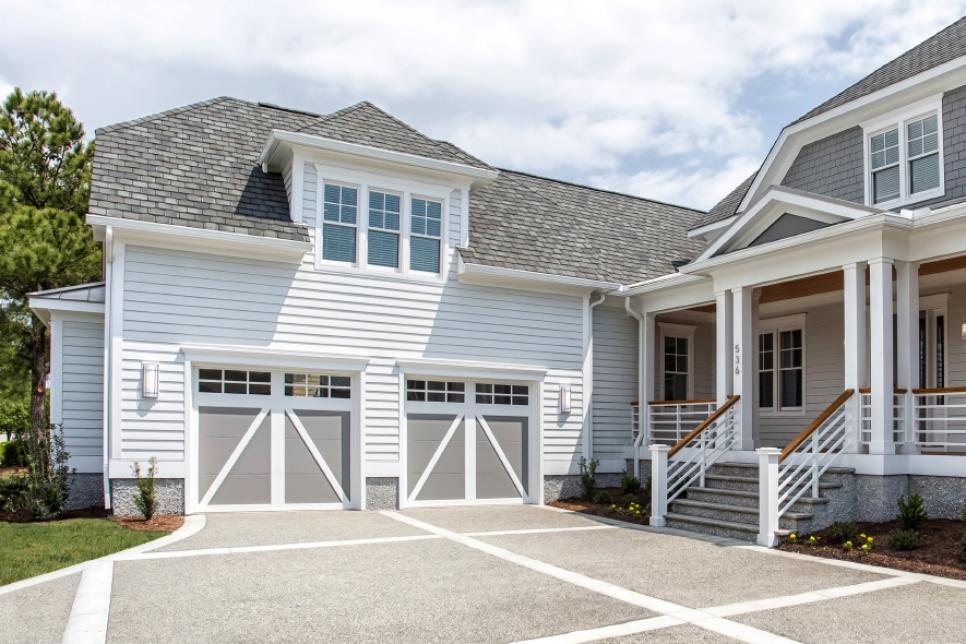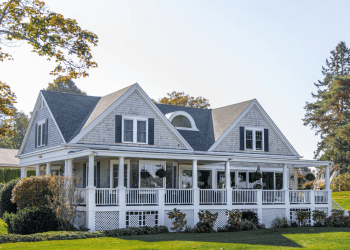Adding a siding, or replacing the old siding of your home is one of the most rewarding home renovation projects a homeowner can undertake. Just like the built up roof, a new siding can improve the curb appeal of your home, enhance the insulation capabilities of the whole property, and can directly improve the resale value of any home.
With that said, all of this is dependent on choosing the right siding material for your home. Different materials don’t just offer different aesthetic values but have other varying properties as well. For instance, vinyl siding is more suited than a wooden siding for homes in areas that are prone to regular rainfall.
In this article, we will be discussing the most popular siding materials that are commonly used for modern homes, along with their pros and cons. This way, you can make an informed decision while choosing a siding material for your home.
Let us begin:
Vinyl Siding
The most popular siding material is hands down vinyl. Strong, weather-resistant, durable, affordable, and versatile, vinyl offers some truly incredible advantages when used as a home siding material.
With new technology, vinyl siding is more fade-resistant and insulant than ever. The same coloring technology also makes them one of the most versatile choices, as a vinyl siding can be colored to mimic the texture of wood.
With a lifespan that ranges between 18 and 30 years, vinyl siding is perhaps the best option out there.
The only negatives of a vinyl siding are that it is not particularly well designed to withstand impact and vinyl siding may get cracked during a bad hailstorm.
Metal Siding
Metal sliding, usually made out of aluminum, was popular for a long time until vinyl siding became popular.
However, metal siding made of stainless steel is not making a comeback. Coated with PVC, zinc, or other galvanized material to avoid corrosion, metal sliding comes in all forms, even metal shingles. A cost-effective option for homeowners, metal siding is easily maintained and is mold, fire, and insect resistant.
There are however, a few downsides of using metal siding. For starters, the anti-corrosion material layer may chip off leading to damage to the siding. Another disadvantage of using metal for siding is that it will be loud when there is rain or a hailstorm.
Wood Siding
Wood siding gained popularity for the amazing aesthetic value it offers to homes. Wood siding is usually more expensive than other options on this list, but the genuine wood siding look can do wonders for a home’s curb appeal.
Mostly, wood is covered with paint and sealant to prevent water damage and insect infestation. However, this layer of protective material needs to be repainted every couple of years to maintain the life of the wood siding.
In fact, manufacturers claim wood siding will last a lifetime if properly maintained and cared for. Wood siding is also the most environmentally friendly siding option available in the market.
Fiber Cement Siding
Fiber cement siding is made by creating a mix of cement and wood fibers. This type of siding is extremely durable and can last as much as twice as vinyl siding.
Available in a range of styles and textures, fiber cement siding is also designed to mimic the look of wood siding.
With that said, this long lifespan is heavily dependent on regular maintenance in the form of painting (ideally done every 3 to 5 years).
Moreover, fiber cement siding is susceptible to scratching that can lead to more serious issues like water damage.
Conclusion
These were our top choices for siding material used in residential properties. Did we miss out on any of your favorites? Share with us in the comment section below.









Comments 1